Deep in the Desert in West Texas, a Spring-Fed Swimming Pool Beckons
It’s not just a recreational hotspot—it’s also an ecosystem.

A surefire indicator of the Texas desert’s unrelenting severity awaits when you turn south after taking the exit for Balmorhea. There, on the side of the road, an abandoned tan hatchback sinks into a pebble-covered bed of sand and dirt. The car might be a Volvo. Or used to be a Volvo. It’s difficult to say with the front bumper detached and hanging on the ground and the hood smashed up against a windshield that’s sporting a crater the size of a basketball.
Life in the Texas desert is tough. There’s really not even cactus, certainly nothing like the grand saguaro variety in Arizona—just a never-ending landscape of sand, dust, and mountain, whipped by the scorching sun.
But there is a swimming pool.
Highway 3078, the road off the interstate where the hatchback is decomposing, bends and veers past gated ranches and hills until, at the outskirts of Balmorhea, the monotonous beige on the side of the road transforms into a crystalline blue. In the middle of Southwest Texas, at the eastern edge of the Chihuahuan Desert, 15 million gallons of water see the light of day after waiting underground for thousands of years. The water then springs into a 1.75-acre basin home to endangered pupfish and gambusia, a velvety surface of chara algae—and three diving boards and a high dive.

If the measuring stick for the size of any small town is number of stoplights, then Balmorhea ranks off the scale. Here, residents didn’t even get sidewalks on Main Street until 1999. But Balmorhea, a town of 500 located about 200 miles east of El Paso, 50 miles north of the art town of Marfa, and 100 miles north of the border, has always had the springs.
In ancient history, fault lines in southwest Texas shifted just so, creating breaks in the ground that trace through the Davis Mountains to the west, toward an aquifer 400 miles to the northwest. The breaks act like pipes, and the water rushes through, mixing with another source of water from the Davis Mountains in the south. The water then ends up gushing from the ground in Balmorhea as the San Solomon Springs.
Before the pool, the water first attracted animals and hunters. By at least the 19th century, Native Americans were developing permanent residences out of adobe nearby. Some 100 years later, Mexican-American and white settlers had turned Balmorhea into a farming community (alfalfa, cotton, corn, watermelon), using the plentiful springs for irrigation. It became an official city in the early 1900s.
In 1934, the Texas parks board found swimming to be its residents’ preferred recreational activity and began a building spree all over the state. The timing coincided with Franklin Delano Roosevelt’s New Deal. The Civilian Conservation Corps Program was putting thousands of young, unmarried men to work at state and national parks. According to a 1937 report in The Shiner Gazette, 162 men had enrolled in the Civilian Conservation Corps and worked in Balmorhea. They carved a circular ditch 214 feet in diameter into the marshy land from which the water sprung and filled the surface and the sides with white and red rock donated by a local cattle rancher. The pool extends diagonally on both sides of the center with arms measuring 240 feet in length and 70 feet in width. The design is meant to resemble an eagle with outspread wings.

The pool opened on June 7, 1936. A few weeks later, the town celebrated with dancing, an orchestra, and speeches from civic leaders. The road that now wraps around Balmorhea was back then part of Highway 290, a well-traveled thoroughfare that extended to San Antonio. Buoyed by passersby and tourism, the town’s population reached upwards of 1,000 people in those days. There were six gas stations, seven grocery stores, six cafes, three barber shops, a drug store, a movie theater, and a dance hall. After the first year, one newspaper article reported that visitors had already come from foreign countries and nearly every state in the Union.
On my visit in early April 2019, a French couple, Mennonites, and a dozen local teenagers listening to music are among the few visitors. One of the teenagers yells to his friends he just spotted a roadrunner outside the fence. They don’t believe him.
The water temperature always ranges from 72 to 76 degrees. Bypassing a set of stairs, I plunge directly into the pool, and the chilled water steals the breath from my lungs. When I dive below to feel the algae, the Comanche Springs Pupfish and gambusia swim directly across my face before dispersing. This type of pupfish lives nowhere else in the world. The Balmorhea pool is an ecosystem.
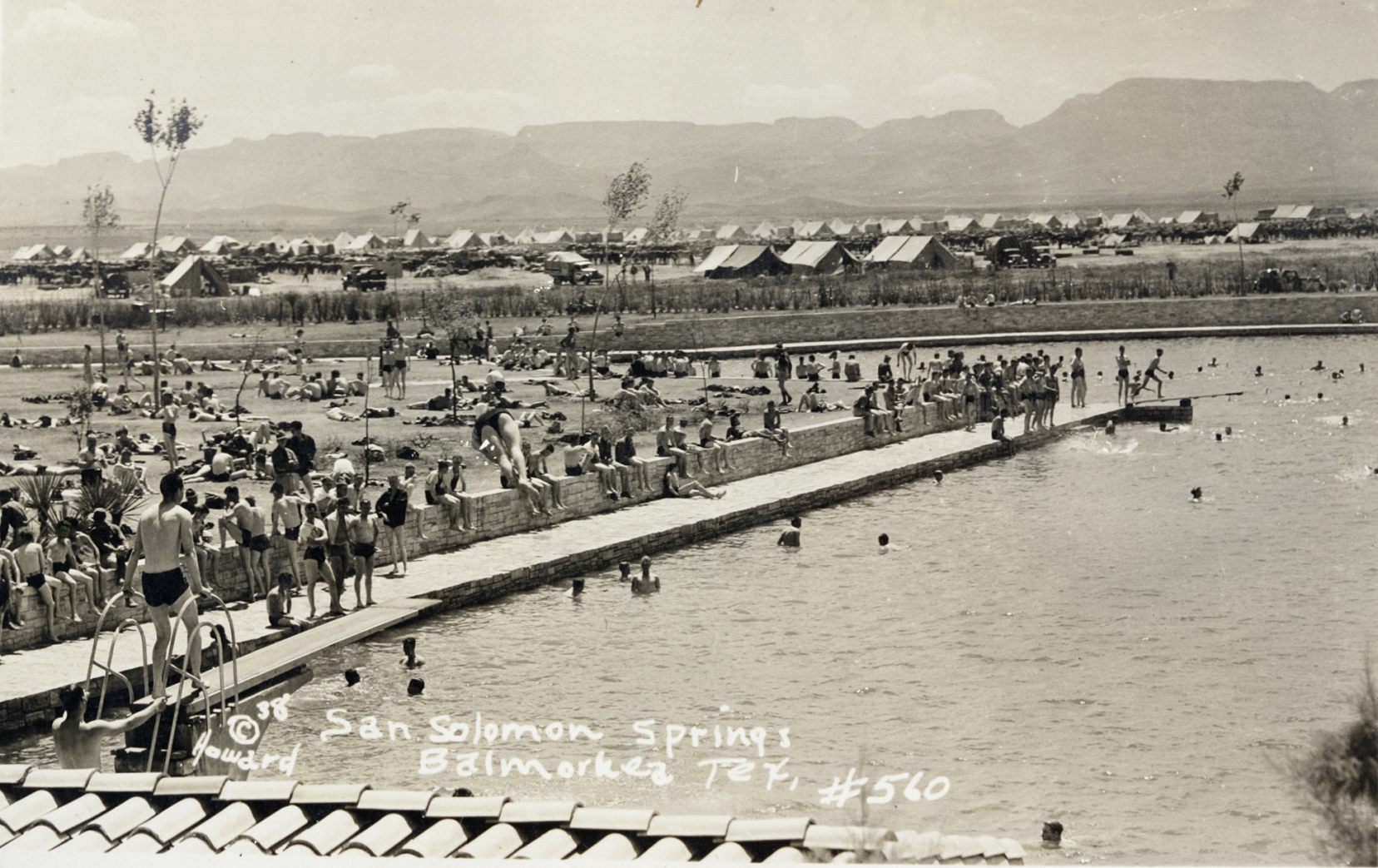
Despite a remote location, its charms are no longer a secret. For the last several years, annual attendance at the pool has steadily increased from about 71,000 in 2008 to 153,000 in 2017. On July 4, 2017, 2,700 people packed into the park at the same time, leading staff to cap the current maximum number of visitors at 900. On summer weekends, cars line up for a half mile outside the park, waiting their turn.
But in the summer of 2018, attendance was zero. Balmorhea State Park closed for repairs. During a routine maintenance session that May, says Mark Lockwood, regional director for Texas Parks and Wildlife, workers discovered erosion under the diving well. The millions of gallons of water swirling into the pool proved too strong for the rock hauled by the Depression-era men.
Though the problem stemmed from the water being too powerful, the closure provided a reminder of the fragility of San Solomon Springs. The San Solomon flow has decreased from about 25 million gallons daily in the 1930s to 15 million today.
The forces of nature that lead Solomon Springs to daily produce enough water for 22 Olympic-size swimming pools are partially a mystery. Nobody knows precisely how to ensure their continued flow—or whether it’s even possible.

The Southwest Texas desert once had another spring-fed pool. In Fort Stockton, not far from Balmorhea, 35 million gallons flowed daily from the Comanche Springs into a basin next to a park where people picnicked and played softball. Then, in 1951, the water stopped flowing.
A farmer who lived 10 miles outside of town was responsible. He likely drilled into the breaks in the ground that carried the water from the mountains into Fort Stockton and pumped the Comanche Springs dry with diesel-powered irrigation wells. Local citizens and government officials couldn’t do anything to stop him. Through Texas’s Rule of Capture, landowners own any groundwater they can extract from underneath their property.
In fall 2016, the oil and gas company Apache announced the purchase of land in and around Balmorhea. So far it has installed nearly 200 wells for oil and gas and has plans to develop as many as 5,000. The fracking process, which entails the use of millions of gallons of water for each well, could contaminate or deplete the San Solomon Springs.
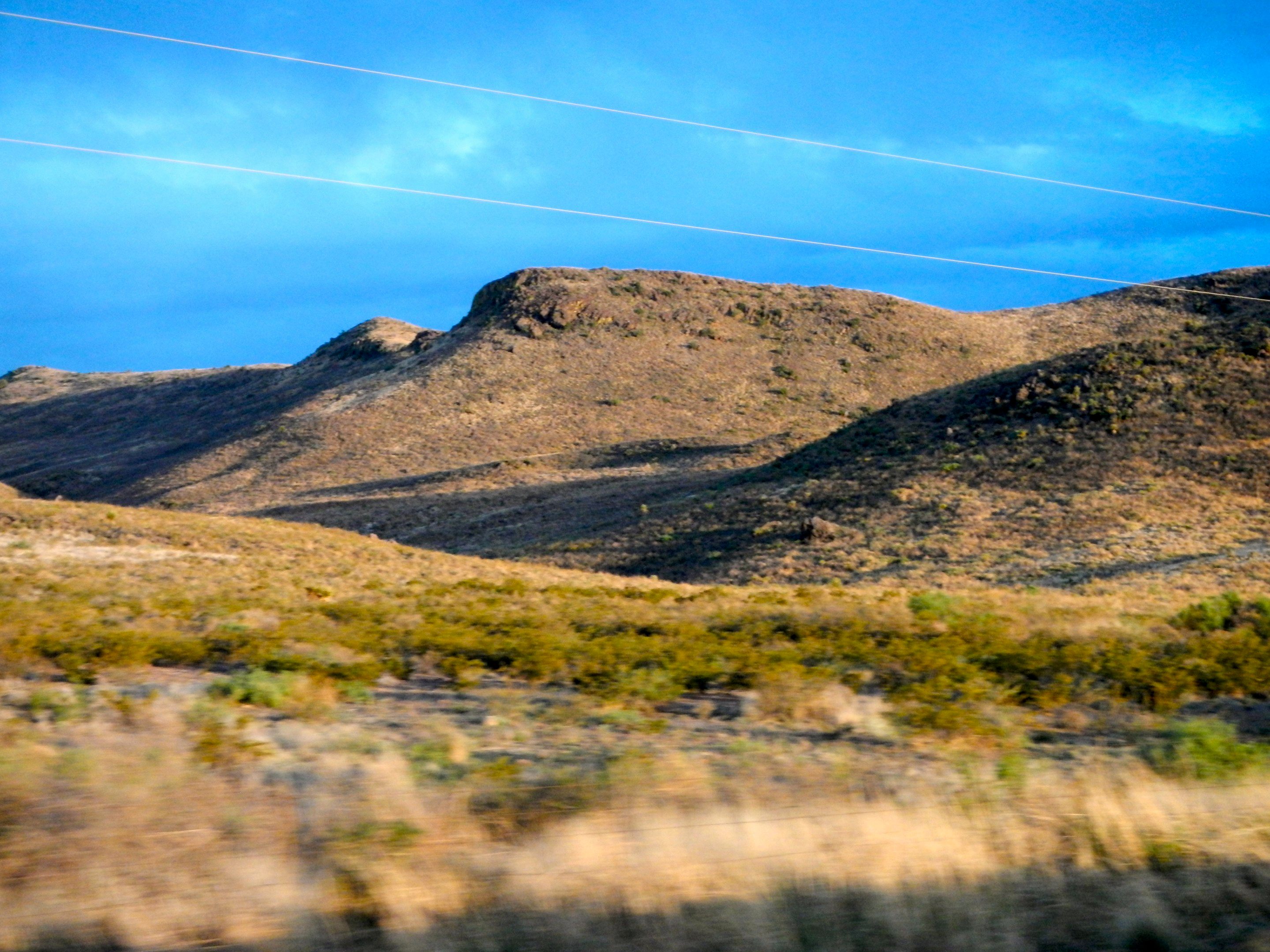
Apache has been as gracious a partner to Balmorhea State Park as can be expected of a company that drills 7,000 feet into the earth pumping water, sand, and chemicals to break apart shale rock a few miles from the park’s location. When $1 million in donations were raised to start repairs last year, the company poured in another $1 million to complete them. It has pledged not to drill on land it has leased in Balmorhea, where the risks of disrupting San Solomon Springs would be much greater. Also it has funded a group of analysts from the University of Texas-Arlington to monitor the water at 25 sites. Zac Hildenbrand, part of an independent team of environmental analysts that regularly works with the oil and gas industry, says no major fluctuations have occurred.
Concerns have also died down in Balmorhea. Pat Brijalba, a lifetime resident and unofficial town historian, says as long as Apache stays north of Interstate 10, which is about three miles north of Balmorhea, he’s not worried. And either way, there’s no stopping the oil and gas exploration. “It’s all private land,” he says. “What can you do?”
Someday—whether through nature or agriculture or industry—the springs will be taken away. The desert will be dry. The pool will be closed. The oasis will be gone. In August of 1951, a journalist in the Austin American reporting on the loss of the Comanche Springs wrote, “Only in fables do jars of water and wine that can never be exhausted exist. The fables are delightful.”


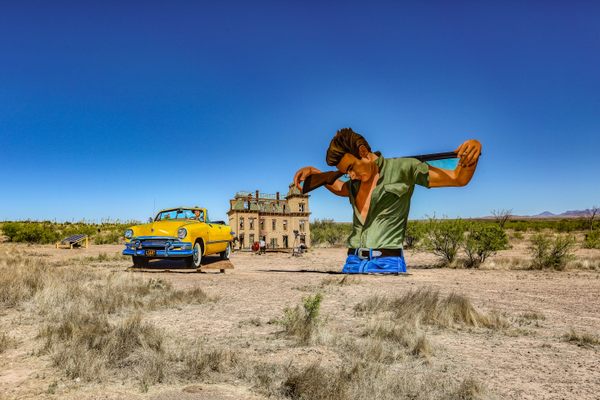


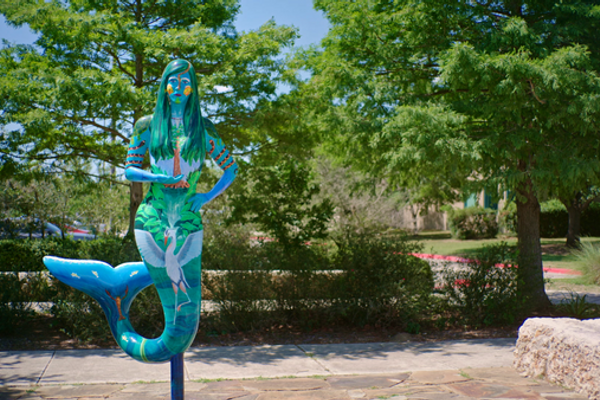

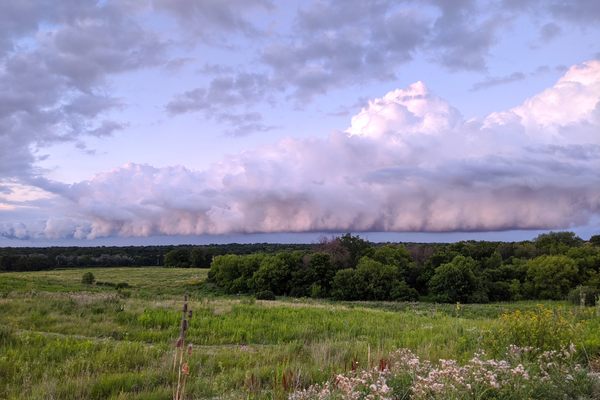








Follow us on Twitter to get the latest on the world's hidden wonders.
Like us on Facebook to get the latest on the world's hidden wonders.
Follow us on Twitter Like us on Facebook